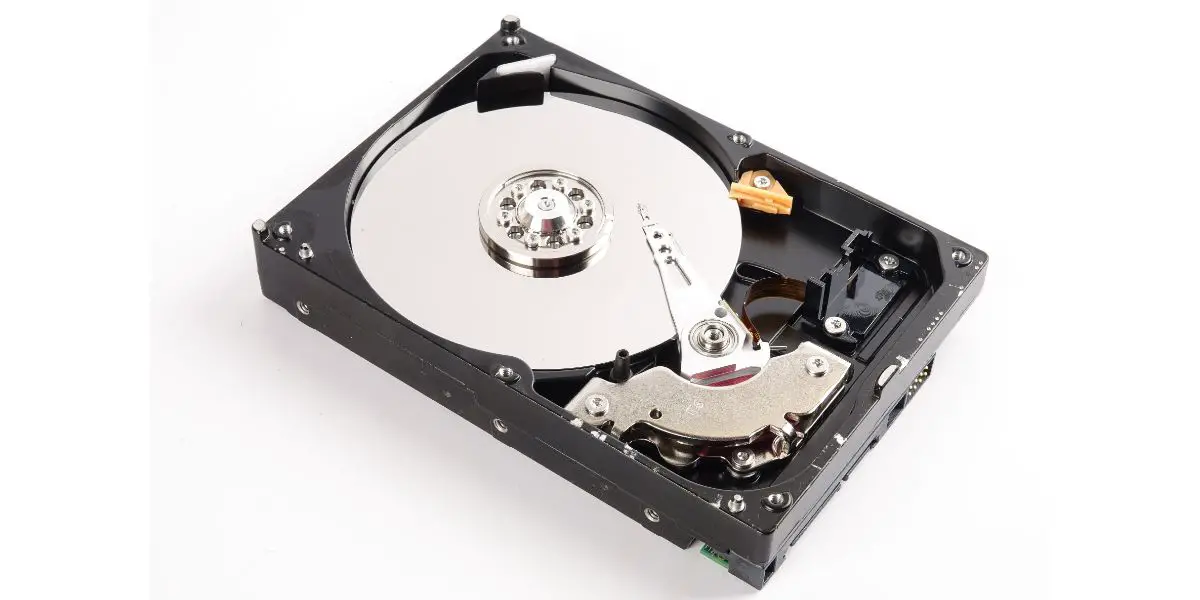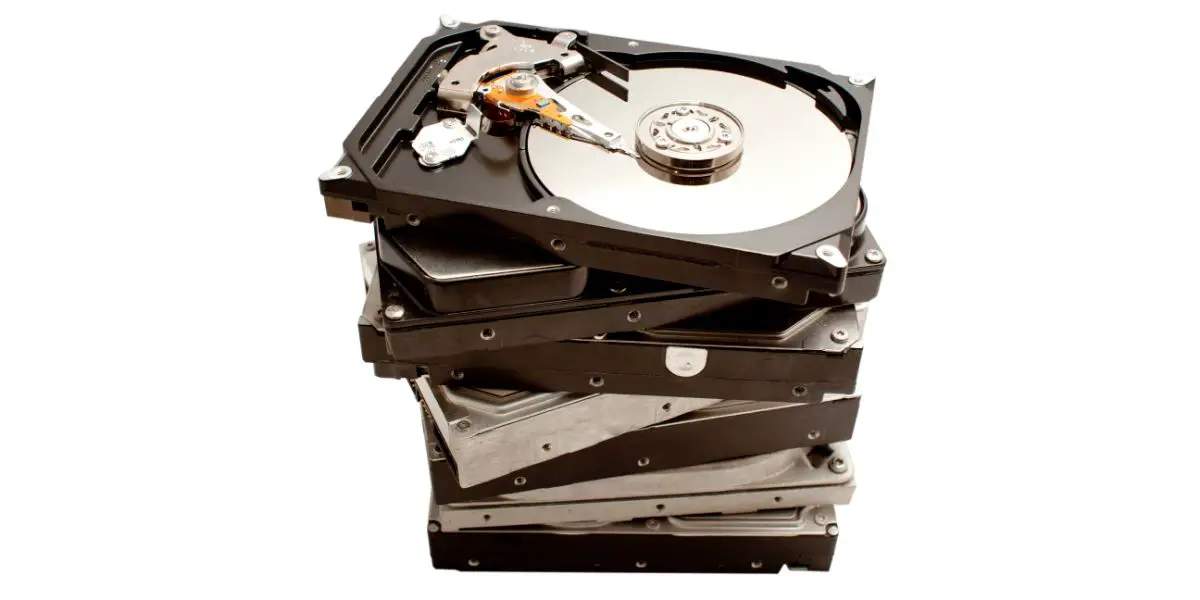Disclaimer: This post may contain affiliate links, meaning we get a small commission if you make a purchase through our links, at no cost to you. For more information, please visit our Disclaimer Page.
A hard drive stores data permanently as it’s a nonvolatile storage device, as opposed to volatile technologies like RAM. However, the lifespan of a hard drive is limited: typically, it serves three to five years before it has to be fixed or replaced.
Read on to learn more about hard drive storage technology, how reliable it is, and how to ensure the safety of your data.

Table of Contents
How Does Hard Drive Storage Work?
Backing up your data, preferably in several ways, is crucial to ensure you don’t lose it. A hard drive is one storage option; however, does it store data indefinitely?
A Hard Drive Is a Nonvolatile Storage Device
When discussing whether a certain storage type can keep data permanently, we mainly refer to what kind of technology it uses. Some storage devices are designed to keep data indefinitely, while others are specifically created to serve as short-term memory.
In reality, no device or technology is perfect: it can be damaged, corrupted, or inaccessible. The technical limitations should always be counted in. However, in its design, a hard drive is meant for permanent or nonvolatile data storage.
To better understand what technology differences we are talking about here, it’s essential to discuss what volatile and nonvolatile storage types are. Put shortly; they distinguish between short- and long-term memory devices.
Permanent data storage, or nonvolatile devices, can keep the data when they lose access to power. Volatile memory, like RAM or cache, only keeps the files while powered; it’s faster, which is its main advantage, yet unsuitable for long-term storage.
So, a hard drive can store data permanently in terms of memory type.
The Difference Between HDD and SSD
HDD stands for Hard Disk Drive and is the device for which the term “hard drive” is reserved. However, people frequently refer to SSDs (Solid State Drives) as hard drives, even though they are not the same thing.
Therefore, covering the key differences between an HDD and an SSD is important. It’s also easier to understand how both devices work when we compare them.
An HDD is an older and, in many ways, outdated technology. It uses moving parts (heads) to write and read data. Magnets are utilized to make them move across the platter and perform all necessary operations.
HDDs have been around for a long time and were used as the primary permanent storage units in PCs and other devices. So, when a more advanced technology of SSDs was introduced, people kept referring to it as a hard drive: more like a concept of long-term memory than the device itself.
SSDs use chips similar to flash drives instead of heads. The chips store data, with one controller chip keeping track of where each file is kept so it can be instantly accessed upon request.
SSDs are faster, highly efficient, and more durable because they utilize electronic technologies as opposed to HDDs which are essentially mechanic devices. Some manufacturers still use HDDs as they are cheaper; however, SSDs are steadily taking their place as the primary permanent-memory storage.
The Lifespan of a Hard Drive
As I mentioned, despite hard drives being permanent storage devices, they don’t store data indefinitely. HDDs wear out over time: their mechanic construction is vulnerable to physical damage. Both HDDs and SSDs have a limited lifespan.
On average, an HDD lasts three to five years. It may require additional maintenance and typically fails after five years of service. Because of this, a timely replacement is crucial for data safety.
SSDs, on the other hand, are less prone to physical damage, which makes them much more durable. However, they don’t last forever, either: the average lifespan of an SSD is five to ten years. With proper maintenance, it can last up to 20 years. If you’re curious to discover more, we cover why SSDs degrade over time in this article.

Pros and Cons of Hard Drive Storage
Let’s now look at the advantages and disadvantages of hard drives. To be more precise, I’ll cover the benefits and drawbacks of HDDs and SSDs separately, including their specific features.
The Pros of HDDs
- Nonvolatile. First and foremost, hard drives are permanent storage: they can safely keep your data with or without a power supply.
- High availability. HDDs are easy to find: despite being pushed back by SSDs, they are available virtually everywhere.
- High capacity. While the technology behind HDDs may be outdated, it still allows for a lot of storage space: up to 10 TB.
- Affordable. HDDs are relatively cheap, considering their capacity, especially compared to SSDs.
The Cons of HDDs
- Slower speed. Due to its mechanical construction, HDD is not as fast as an SSD.
- Power demanding. Again, the mechanical moving components of HDDs lose dramatically to electronic technology. They require significantly more power than SSDs do.
- Prone to physical damage. The heads can break or scratch the platter if even the tiniest particles get in their way. The mechanic nature of HDDs makes failure due to physical damage practically inevitable.
- Less efficiency. Apart from requiring much power, HDDs also produce a lot of heat.
The Pros of SSDs
- Nonvolatile. Just like HDDs, SDDs are also meant for permanent data storage.
- Fast. The more advanced electronic technology makes SSDs much faster-performing devices than HDDs.
- Power-efficient. SSDs require less power than HDDs as no moving parts are involved, resulting in higher efficiency.
- Durable. Once again, relying on electronics rather than mechanics makes physical damage less probable, resulting in SSDs lasting significantly longer.
The Cons of SSDs
- Expensive. As technology evolves, SSDs are becoming more affordable; however, they are still more costly than HDDs, which is why many people prefer the latter.
- Limited capacity. Unlike HDDs which allow for the constant expansion of storage space (due to greater density), SSDs have a maximum capacity of 4 TB.
The Best Data Backup Strategy
Let’s look at the benefits and disadvantages of hard drives more generally to see whether they are reliable data backup options.
On the one hand, they are affordable and allow for a lot of storage space. For instance, they are durable and have a much bigger capacity than a flash drive. Hard drives are arguably the best solution as a physical form of data storage.
Still, having data backed up on a physical device has significant drawbacks. While the capacity of hard drives is impressive, it’s still limited to a certain value. More often than not, you will have to get multiple devices to back up all of your files.
Most importantly, a hard drive can be lost or damaged, which will lead to you losing the data altogether. Sometimes, the files can be restored; yet it’s a complex and costly process with no guaranteed success. The risk of failure requires regular replacement of drives to ensure your data is safe.
So, what’s an alternative? Nowadays, the most reliable form of data backup is cloud storage. It’s offered by several services, most of which are rather inexpensive. They have unlimited capacity, and the risk of data loss is significantly lower.
The best strategy here is probably a combination of both. Keep your most important files both on a hard drive and in cloud storage to ensure the highest level of safety.
Conclusion
Hard drives can store data permanently: they are nonvolatile, meaning they can keep information even when powered off. However, in a practical sense, hard drives are not the solution for indefinite data storage as they can be damaged and have a limited lifespan.
